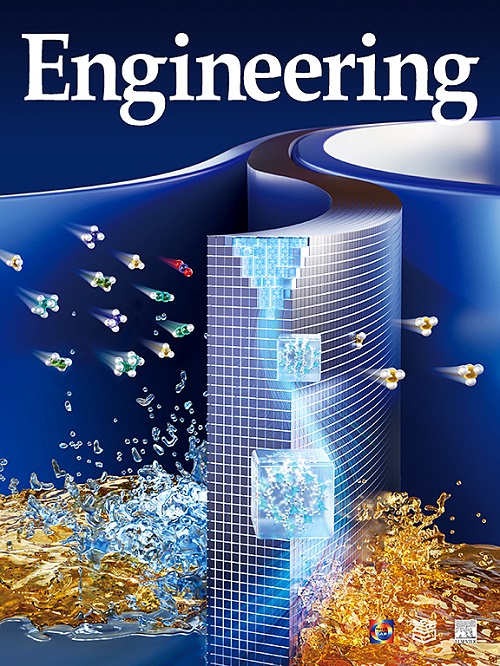Robust Platoon Control of Mixed Autonomous and Human-Driven Vehicles for Obstacle Collision Avoidance: A Cooperative Sensing-Based Adaptive Model Predictive Control Approach
IF 11.6
1区 工程技术
Q1 ENGINEERING, MULTIDISCIPLINARY
引用次数: 0
Abstract
Obstacle detection and platoon control for mixed traffic flows, comprising human-driven vehicles (HDVs) and connected and autonomous vehicles (CAVs), face challenges from uncertain disturbances, such as sensor faults, inaccurate driver operations, and mismatched model errors. Furthermore, misleading sensing information or malicious attacks in vehicular wireless networks can jeopardize CAVs’ perception and platoon safety. In this paper, we develop a two-dimensional robust control method for a mixed platoon, including a single leading CAV and multiple following HDVs that incorporate robust information sensing and platoon control. To effectively detect and locate unknown obstacles ahead of the leading CAV, we propose a cooperative vehicle–infrastructure sensing scheme and integrate it with an adaptive model predictive control scheme for the leading CAV. This sensing scheme fuses information from multiple nodes while suppressing malicious data from attackers to enhance robustness and attack resilience in a distributed and adaptive manner. Additionally, we propose a distributed car-following control scheme with robustness to guarantee the following HDVs, considering uncertain disturbances. We also provide theoretical proof of the string stability under this control framework. Finally, extensive simulations are conducted to validate our approach. The simulation results demonstrate that our method can effectively filter out misleading sensing information from malicious attackers, significantly reduce the mean-square deviation in obstacle sensing, and approach the theoretical error lower bound. Moreover, the proposed control method successfully achieves obstacle avoidance for the mixed platoon while ensuring stability and robustness in the face of external attacks and uncertain disturbances.
用于避障的自主与人力混合车辆的鲁棒排布控制:基于合作传感的自适应模型预测控制方法
由人类驾驶车辆(HDVs)和互联与自动驾驶车辆(CAVs)组成的混合交通流的障碍检测和排队控制面临着不确定干扰带来的挑战,如传感器故障、不准确的驾驶员操作和不匹配的模型错误。此外,车载无线网络中误导性的传感信息或恶意攻击也会危及 CAV 的感知和排队安全。在本文中,我们开发了一种混合排的二维鲁棒控制方法,包括单个领先 CAV 和多个跟随 HDV,该方法结合了鲁棒信息感知和排控制。为了有效探测和定位前导 CAV 前方的未知障碍物,我们提出了一种车辆-基础设施合作感知方案,并将其与前导 CAV 的自适应模型预测控制方案相结合。这种感知方案融合了来自多个节点的信息,同时抑制了来自攻击者的恶意数据,从而以分布式和自适应的方式增强了鲁棒性和抗攻击能力。此外,我们还提出了一种具有鲁棒性的分布式汽车跟随控制方案,以保证在考虑不确定干扰的情况下跟随 HDV。我们还从理论上证明了该控制框架下的串稳定性。最后,我们进行了大量仿真来验证我们的方法。仿真结果表明,我们的方法能有效过滤恶意攻击者的误导性传感信息,显著降低障碍物传感的均方偏差,并接近理论误差下限。此外,所提出的控制方法成功实现了混合排的避障,同时确保了面对外部攻击和不确定干扰时的稳定性和鲁棒性。
本文章由计算机程序翻译,如有差异,请以英文原文为准。
求助全文
约1分钟内获得全文
求助全文
来源期刊

Engineering
Environmental Science-Environmental Engineering
自引率
1.60%
发文量
335
审稿时长
35 days
期刊介绍:
Engineering, an international open-access journal initiated by the Chinese Academy of Engineering (CAE) in 2015, serves as a distinguished platform for disseminating cutting-edge advancements in engineering R&D, sharing major research outputs, and highlighting key achievements worldwide. The journal's objectives encompass reporting progress in engineering science, fostering discussions on hot topics, addressing areas of interest, challenges, and prospects in engineering development, while considering human and environmental well-being and ethics in engineering. It aims to inspire breakthroughs and innovations with profound economic and social significance, propelling them to advanced international standards and transforming them into a new productive force. Ultimately, this endeavor seeks to bring about positive changes globally, benefit humanity, and shape a new future.
 求助内容:
求助内容: 应助结果提醒方式:
应助结果提醒方式:


